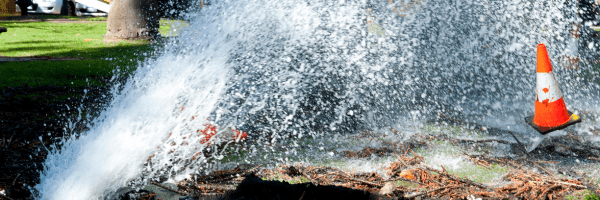Your guide to Texas’ lakes and rivers
This is a preview of our Texas 2036 newsletter taking a deep dive into the state’s many lakes and rivers. To receive this weekly look at our work, sign up here.
Texas lakes and rivers: What you need to know

Texas has 196 major lakes, located among 15 river basins. It also has eight coastal basins and about 191,000 miles of streams, according to the Texas Water Development Board.
During the dog days of summer, you can probably find a Texan in nearly all of those watering holes! Here’s what you need to know about our state’s beloved lakes and rivers.
Texas lakes: They’re mostly made by Texans

Did you know? Lake Travis is almost 30 square miles and over 200 feet deep — and it’s a manmade reservoir! It’s not even the largest reservoir in Texas.
Texas does not have many naturally occurring lakes. Many natural lakes form near coastal areas such as the Texas-Louisiana border and in the Rio Grande Valley. Some of Texas’ natural lakes include Sabine, Green and Caddo Lakes.
Reservoirs were originally constructed in the early 1900s for flood control, but now they are essential for water supply, hydropower and agriculture.
- More than half of the available surface water in the state comes from reservoirs equating to 8.9 million acre-feet per year.
- The largest natural freshwater lake is Green Lake, at 10,000 acres.
- Toledo Bend is the largest reservoir in the southern U.S. at 185,000 acres and 110 feet max depth.
How extreme heat affects Texas lakes, reservoirs

Rain is the best friend to our state’s reservoirs, providing much needed water to those important resources. Heat, though, is perhaps our reservoirs’ great enemy, grabbing away water through evaporation.
Because the reservoirs are so important to the state’s water supply, the TWDB monitors carefully the rates of evaporation all across the state. You can check out the data here.
Evaporation rates are monitored through roughly 4,000 precipitation gauging stations in Texas and surrounding states and about 100 evaporation stations.
How much more water will we need?
The Texas Water Development Board conducts annual surveys on the volume and usage of ground and surface water. The total estimated water usage for 2021 was 14.4 million acre-feet and a reduction from the previous year’s.
A breakdown of consumption indicated irrigation was the largest water user at 53% followed by municipal water use at 32%. Other water uses included manufacturing (7%), power (4%), mining (2%), and livestock (2%).
Did you know? Crop irrigation’s share of overall water use has declined in recent decades, mainly due to groundwater depletion in the state’s aquifers that leaves less water available to be used by agriculture.

Current projections show the state’s water supply decreasing by 18% by 2070 while water demand is expected to increase by 9%.

In a Texas Tribune explainer published in 2023, it was reported that water demand will increase in 187 of Texas’ 254 counties by 2050.
The Tribune notes the cost to repair aging and failing water systems, secure new water supplies to support the state’s booming population and implement new water treatment technologies will cause higher water rates for consumers.
Aging, water infrastructure is affecting Texans

After experiencing three major water outages, Odessa has become the face of Texas’ water infrastructure crisis, leading to the need for a $25 million investment by that Permian Basin city into its water system.
But the outages and associated boil water notices have happened in cities all across the state in places like Houston, Austin, Fort Worth and Zavalla.

Did you know? In 2021, Texas experienced 30 billion gallons of water loss due to broken pipes and water leaks, according to the state comptroller. That amount of water could supply 1.2 million households for a year!
A 2022 survey by the Texas Rural Water Association found that the average age of small- to medium-sized water systems in Texas dated to 1966. Meanwhile, more than 165,000 miles of pipes constitute the water distribution system in Texas.
The Texas Water Fund, which was established by legislators and the voters last year, will invest $1 billion toward improving the state’s water and wastewater systems.
In 2023, Texas 2036 supported efforts in the Legislature to establish the fund and we actively engaged with Texas voters in the fall to educate them on the importance of creating the fund.
What’s Texas water law? We break it down.

Did you know? Hamilton Pool in Austin is part of the Trinity Aquifer, which is fed by the Glen Rose limestone formation.
Texas water law divides the state’s water supply into two categories:
Surface water — The state owns all water on the surface, encompassing rivers, streams, lakes, and even stormwater and floodwater. Surface water is allocated to water users by seniority, meaning that those holding the oldest water permits are first in line for water claims.
Groundwater — Underground water, which is mostly found in the state’s nine major aquifers, is (for the most part) the property of the landowner. They have the right to pump water from beneath their property. An exception to this is the Groundwater Conservation District. There are 98 GCDs across the state that can regulate pumping within the district.
What’s the next step for lawmakers? A stable source of funding to secure our water future

Next year, lawmakers can designate a permanent funding source for making needed fixes to the state’s water and wastewater systems. We already use this method of finance to support investments in our highway system.
Investing in our water supply should be as much a priority as roads are!
What about those Texas-sized swimming holes?
Texas Monthly’s The Texanist surveys the Lone Star State’s largest swimming holes in this entertaining column.
The biggest pools in Texas? West Texas’ Balmorhea Pool and Austin’s Barton Springs Pool.

Balmorhea State Park (Toyahvale, TX)
Speaking of pools…The Texas Pool in Plano
Did you know? The Texas Pool is listed in the National Register of Historic Places. With its unique architectural design and historic value, the pool offers tourists, visitors, guests, and members alike an opportunity to swim across Texas. (Photo credit: Visit Plano)
What’s your favorite Texas lake?



